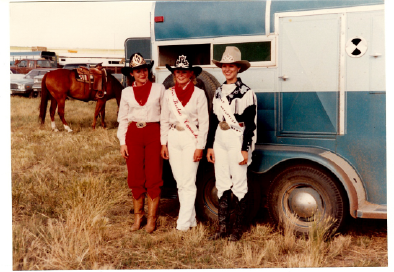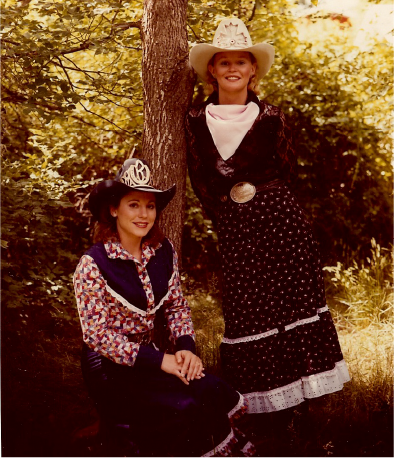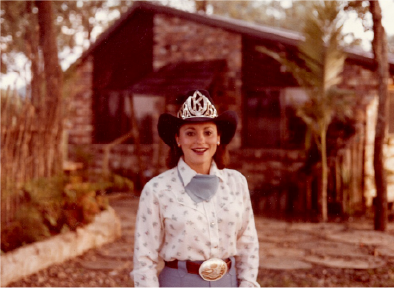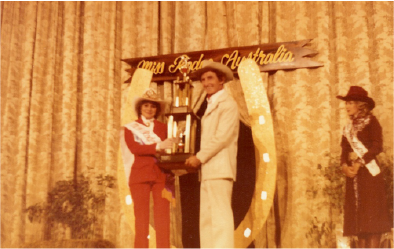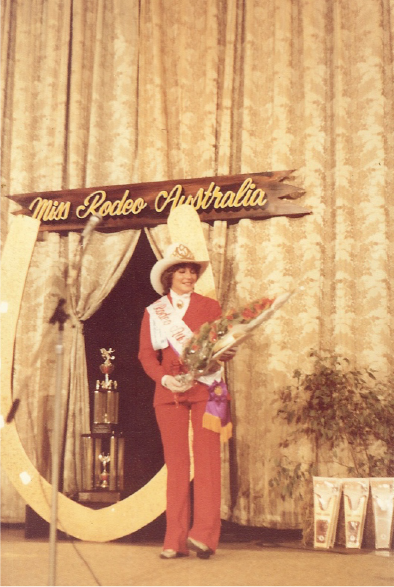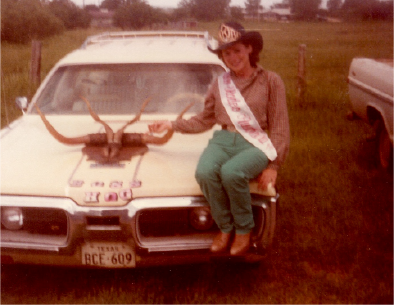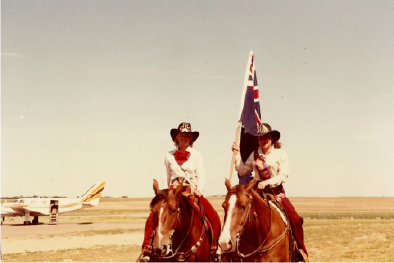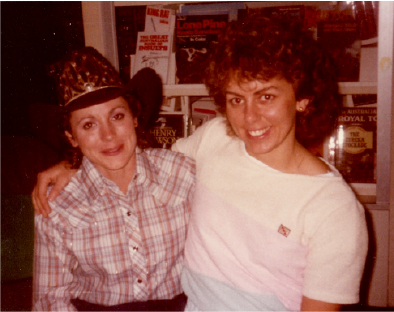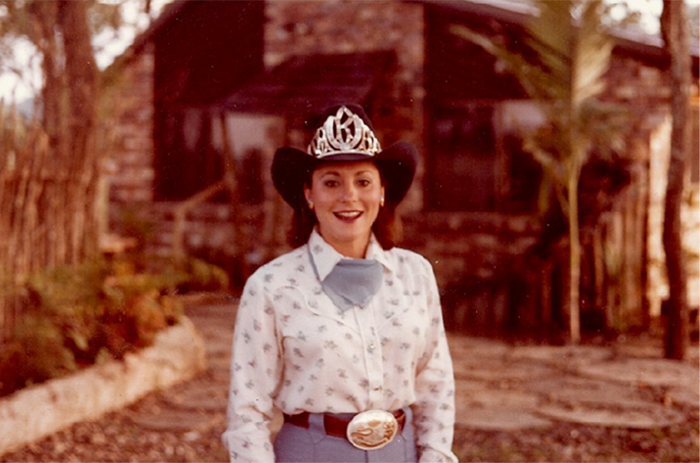Joanne Symons, President and founder of Hyo Silver, established the company in 1999, drawing on her lifelong passion for the rodeo world. Born in Queensland, Australia, Jo grew up on the Australian Rodeo Circuit, guided by her roper father. By the age of 13, she was competing in rodeo events, sharing her father’s love for the Western lifestyle. When not on the road—or, as Aussies call it, the “frog and toad”—they watched The Lone Ranger together, cementing her connection to the cowboy spirit.
Rodeo was Jo’s world, not pageants. But at the Rosewood Rodeo, a last-minute call for contestants due to low entries led her and her cowgirl friends to join for kicks. “If I grow up to be a girl, would you shoot me?”, she teased her father, joking about trading arena dirt for glamour. To her surprise, Jo’s natural poise shone, and she won the Rosewood Rodeo Queen title. This led her to represent the small-town rodeo and compete in the Miss Rodeo Australia Pageant. Blending rodeo prowess in barrel racing, breakaway, and steer undecorating with newfound elegance and public speaking skills, Jo was crowned Miss Rodeo Australia in October 1982.
After her win in 1983, Jo toured Canada, speaking at schools, rodeos, and public events alongside Miss Rodeo Canada, Kathy Cornelsen. She also traveled across the U.S. and Australia, sharpening her eloquence and rodeo knowledge. Though her pageant days were short, they built lifelong friendships and skills that fueled her future. A cowgirl at heart, Jo’s experiences became the cornerstone of Hyo Silver.
When Jo decided to forge a new path in the United States, the Lone Ranger’s iconic cry, “Hi Yo Silver, Away!” flashed in her mind, and the name Hyo Silver was born. Recognizing the opportunities in the U.S. and the deep cowboy bond between Texans and Australians, Texas felt like the natural choice. In 1993, she packed up her family and set out for the Lone Star State, ready to chase her vision. Starting from scratch, Jo faced grueling days: waking early to get her three young children to school, commuting an hour each way, working 12-hour shifts, and returning home past midnight. For weeks, she poured everything into building her brand, focusing on each task rather than the daunting road ahead.
Jo began by designing jewelry and belt buckles, emphasizing quality and distinctive scrollwork that would make Hyo Silver unmistakable. She worked tirelessly at trade shows, building relationships with customers and prioritizing their satisfaction. Her hands-on approach—creating designs, collaborating with artisans, and personally ensuring each piece met her high standards—set the brand apart. Word-of-mouth referrals from delighted customers fueled Hyo Silver’s growth. Jo also invested in learning the business side, navigating supply chains, and adapting to the U.S. market, all while maintaining her vision of celebrating Western heritage.
Today, Hyo Silver is a global icon in the Western and rodeo industry, renowned for its craftsmanship and unique designs. Every piece, from a first buckle awarded to a rodeo champion to a gifted jewelry item, is crafted to create unforgettable moments. Jo’s journey—from a small-town cowgirl to a trailblazing entrepreneur—reflects her relentless drive and commitment to making Hyo Silver a symbol of pride and tradition.
Visit Bandera, Texas during the Smithsonian’s “Crossroads: Change in Rural America” for more local history!
The “Crossroads: Change in Rural America” exhibition, hosted by the Smithsonian Institution’s Museum on Main Street (MoMS) program, is a unique opportunity to explore the evolving story of rural America, with Bandera, Texas, as one of only seven Texas communities selected to showcase this traveling exhibit from June 21 to July 26, 2025. Held at the Bandera Middle School Cafetorium, this free, interactive display dives into how rural communities like Bandera have adapted to economic, social, and demographic shifts over the past century. Bandera, known as the “Cowboy Capital of the World,” offers a rich backdrop for this exploration, blending its deep Western heritage with the broader narrative of rural resilience and change.
